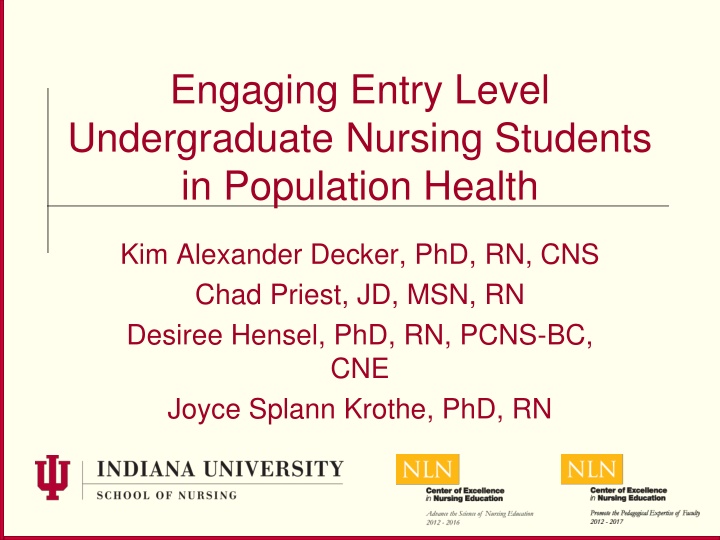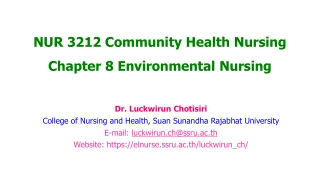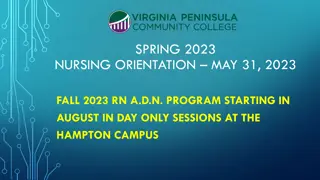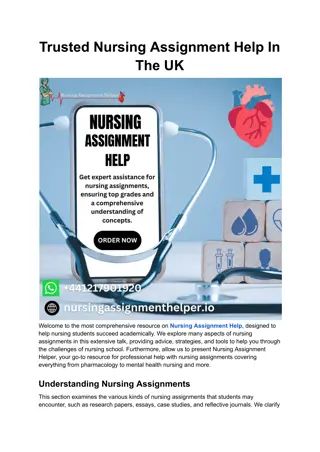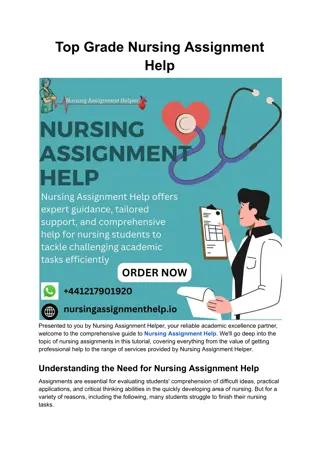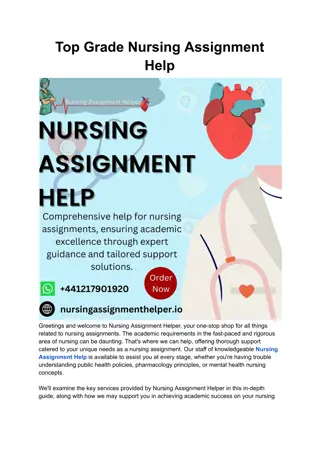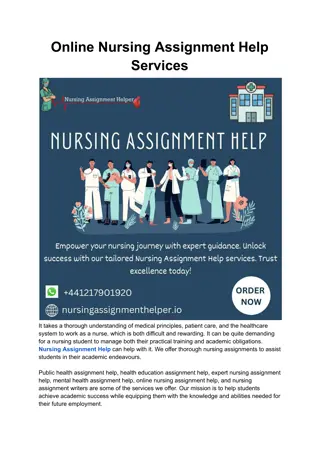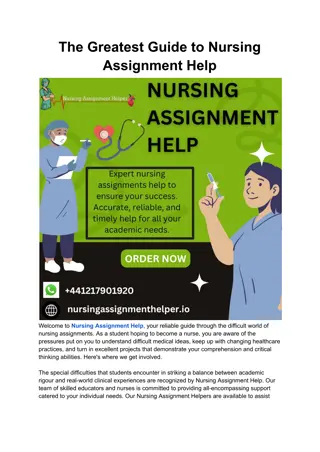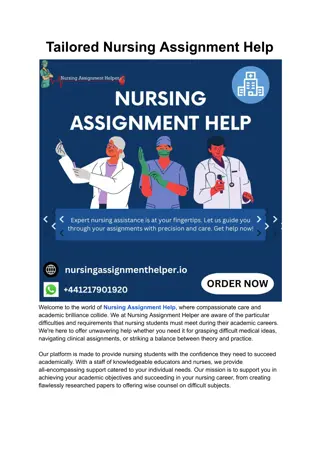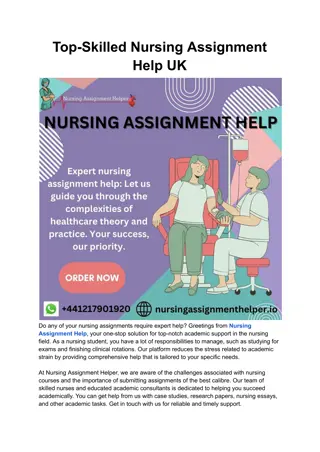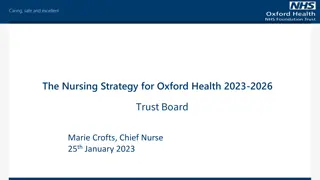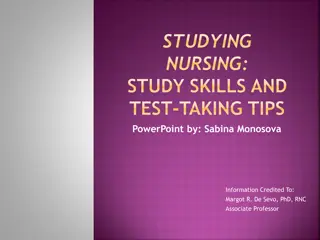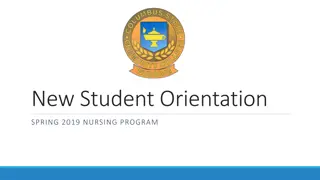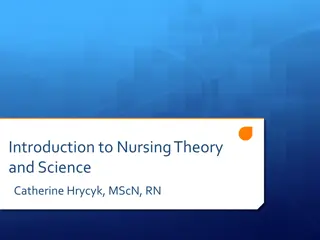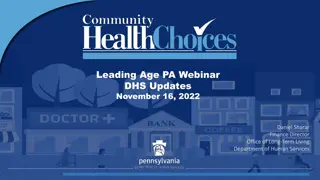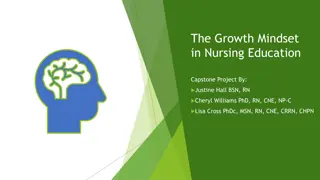Promoting Community Health in Nursing Education
Engage undergraduate nursing students in population health through a course focused on community-based concepts. The course covers competencies like community assessment, individualized health promotion plans, and service projects. It includes a poverty simulation, a windshield survey, and discussions on social determinants of health.
Download Presentation

Please find below an Image/Link to download the presentation.
The content on the website is provided AS IS for your information and personal use only. It may not be sold, licensed, or shared on other websites without obtaining consent from the author.If you encounter any issues during the download, it is possible that the publisher has removed the file from their server.
You are allowed to download the files provided on this website for personal or commercial use, subject to the condition that they are used lawfully. All files are the property of their respective owners.
The content on the website is provided AS IS for your information and personal use only. It may not be sold, licensed, or shared on other websites without obtaining consent from the author.
E N D
Presentation Transcript
Engaging Entry Level Undergraduate Nursing Students in Population Health Kim Alexander Decker, PhD, RN, CNS Chad Priest, JD, MSN, RN Desiree Hensel, PhD, RN, PCNS-BC, CNE Joyce Splann Krothe, PhD, RN
Promoting Healthy Populations Course is part of a major BSN curriculum revision Introductory level course in first semester Intent was to introduce community based concepts at the very beginning of the nursing curriculum
Expected Course Competencies 1) Employ introductory community assessment concepts to an identified geographic area and/or population. 2) Apply growth and development concepts in the care of individuals and families.
Expected Course Competencies 3) Integrate data, class concepts, and partner site needs to provide a service project for the partnering site or agency. 4) Conduct a focused assessment of an individual or family with regard to selected health behaviors in order to create an individualized health promotion plan.
Course Overview Social Determinants of Health Overview Poverty Simulation Windshield Survey Culture of Care Goal University
Unnatural Causes Introduction to Social Determinants of Health Lack of health care does not cause disease Geographic patterns of disease International rankings for leading health indices We can no longer afford to keep treating people s illnesses without fixing what it is that makes them sick
Poverty Simulation Utilized vendors who actually work in the roles - 13 from the community Students lived in Poverty 4 weeks in 15 minutes segments Family must navigate welfare system while procuring food, shelter, child care and healthcare
Poverty Simulation Pre-and posttests showed students: Recognized more societal structural perspectives to poverty; Less stigma toward the welfare system following the poverty simulation; Increased negative perceptions of personal character deficiencies of persons living in poverty.
Poverty Simulation Conclusions Poverty Simulations the first step Face-to-face interactions with impoverished community members was needed to help change attitudes. Service Learning experts suggest 20 hours to change attitudes (following junior community health course will work at the Shalom Center-a local daytime homeless resource center)
Culture of Care Developed due to a nationwide health & safety concern on college campuses Campus wide effort-health - 40,000 students Poor outcomes happening which could have been prevented if onlookers had just acted
Culture of Care Four Specific Areas Addressed: Sexual Well-Being Mental Health Alcohol & Drug Awareness Respect
Culture of Care Initial 4 hour training for all students Bystander intervention in different situations Learned words to use if a friend: Was drinking too much Acting in a way might regret the next day Seemed seriously depressed
Culture of Care Actual clinical hours: Sober Monitor Planning an alternative to drinking activities Leading small or large group discussions Taking friends to related campus lectures Participated in Awareness Runs Joined groups that related to Culture of Care
Culture of Care Results Felt empowered to intervene and support their peers to reduce health risks Realized 1 person can indeed make a difference in another person s life Gained professional skills - educators, leaders and advocates
What is ? The mission of the G.O.A.L. program is to provide kids and families the opportunity to receive education and support on nutrition, fitness, and behavioral habits in order to make positive life-long changes for an active lifestyle.
Goal University Stands for Get on Board for Active Living Students went twice a week to after school programs in groups of 6 Themes of the week Pre and post eating survey of elementary aged students for data collection
Goal University 6 Lessons Week 1 My plate, whole grains and the benefit of exercise Week 2 Fruits, vegetables and sedentary exercise Week 3 Healthy Drinks and Pedometers Week 4 Dairy and Group Exercise Week 5 Protein and Muscles Week 6 Review and Celebration
Conclusion Excellent student evaluations Further course revisions, ongoing process Looking at how introducing healthy populations early on affects their perceptions of the nursing role
